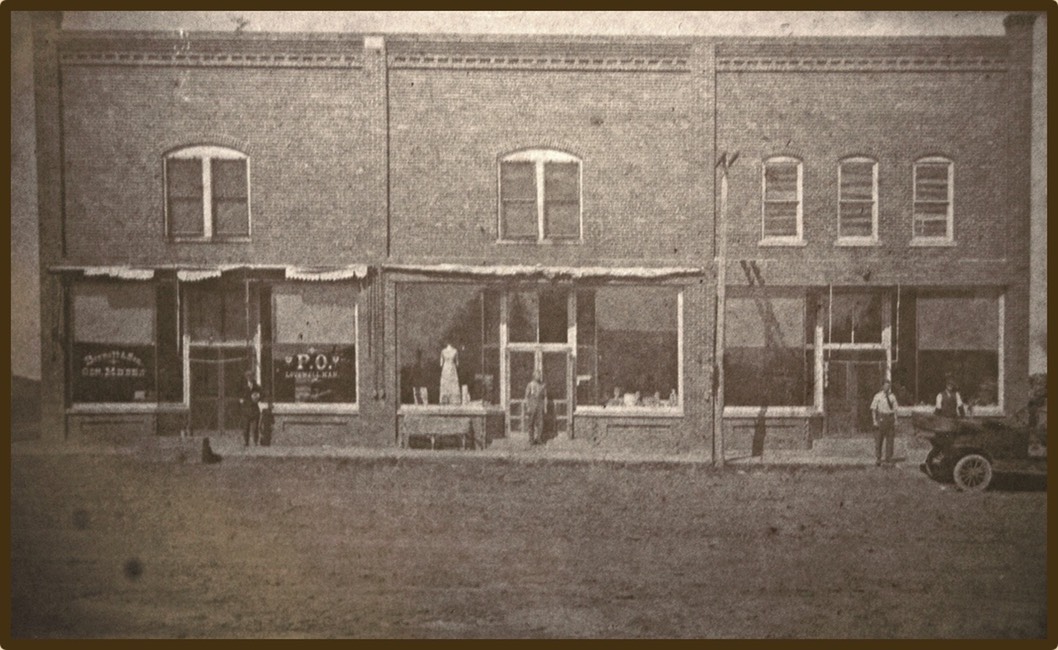People 100 years ago may not have had the Internet, Facebook or Twitter, but they had a form of communication nearly as effortless and inexpensive, the penny postcard. Postcards were nothing new at the dawn of the 20th century, having first appeared in America in 1873, and carrying, wouldn’t you know it, an advertising message.
Even picture postcards had enjoyed decades of popularity when Kodak marketed a novel idea to amateur shutterbugs in 1903. They offered a folding camera that would take photographs perfectly sized for printing on the back of photographic postcard paper, the ideal vehicle for quickly sharing pictures with relatives, as soon as the staff at the local post office was finished looking at them. The idea proved popular enough that a few years later the company introduced a service offering to produce multiple copies of postcards from any picture.
The upshot was that pictures no longer had to be halftoned or engraved before being shared with a wide audience. It’s because of this process that we have a few surviving photographs of the village of Lovewell of such startling clarity that we can magnify the images and almost wander around inside them, browsing shop windows, inspecting passersby for familiar faces, and strolling from house to house along a lane, watching the smoke curl up from the occasional chimney on a frosty morning. I’ve done all of those things with the Lovewell postcards from the Stofer collection. Not every picture posted here is worth examining at its original resolution, which quickly soaks up bandwidth, but I made sure those razor-sharp postcards of the town will pop open in their full glory when clicked.
An example of the earlier kind of consumer postcard, the one-off taken with a folding Kodak,* could be the one sent by Fred G. Poole from the village of Lovewell to the Walt Pooles in Lissie, Texas in 1911. Walter Poole was the husband of Thomas and Orel Jane Lovewell’s daughter Josephine, the child born in the Lovewell cabin at White Rock on Christmas Day 1866. After the Pooles moved to Texas sometime between 1905 and 1910, sending postcards was an inexpensive way to keep them informed about events affecting their old hometown, and thanks to the Eastman Kodak Company, the photograph and its accompanying message remain inseparable to this day.

Hello Walter & Family,
Am sending you a Lovewell washout on AT&SF just North of River Bridge at State Line on Art’s Section. There were 3 work trains up there at one time. Will send you a picture soon of our baby. She is a peach when asleep. There are 3 new buildings going up in Lovewell under one roof. Osborne & Erickson Co., J. C. Mann & J. C. Platt, also a nice bank building. That’s the long & the short - Gunn Family arrived. All well.
F. G. P. & family Lovewell Ks 9-11-11
Anyway, that’s what it looks like to me, although I suppose the name might be “Gum” instead of “Gunn.” The J. C. Mann mentioned as a businessman could be Jacob Clemon Mann, the father of Alta Mann Lovewell’s first husband. Instead of “J. C.” Fred may have meant to write “J. E. Platt” a name which appears frequently on land transactions in the little town as does "Iver Erickson," according to Rhoda Lovewell’s new book. Iver’s partner may have been Oliver Osborne, father of the widowed Daisy Fae Lovewell’s second husband Edward Dale Osborne.
I’m afraid most of the names in the paragraph above are no more than names to me, except for Rhoda, of course, and Alta Lovewell, second wife of Stephen Lovewell. Dave Lovewell (who still contributes to this site even though he’s passed on) always spoke of Alta with great affection.
Before I noticed the date on the postcard I thought it might be a photographic record of the historic flooding on the Republican River in 1915. The washout Fred wrote about turns out to be one I couldn’t find mentioned in any of the local papers. There was major flooding farther west that month, the worst of it no closer than Philipsburg, so the damage on the Atchison Topeka and Santa Fe line near Lovewell might have been the result of a localized downpour. “Art,” by the way, was Fred Poole's brother Arthur, who was evidently part of the section crew who maintained the part of the railroad northwest of town.
Fred’s message of almost Twitter-like brevity does put to rest one matter I had been wondering about, exactly when those three new shops were built in Lovewell, the ones featured so prominently in the recent batch of picture postcards of the town. Fred mentions that they were "going up" in September of 1911. Searching the 1911 Republic County newspapers I finally found an announcement about a grand opening scheduled for one of the businesses that November.

Since Fred Poole mentions two sole proprietors and a partnership, we probably may assume that the gentlemen standing in front of these establishments are Messrs. Platt, Mann, Osborne and Erickson, the captains of this bold venture. Best of luck, gentlemen. You’re going to need it.
*Although it was the sort of use the camera was made for, Fred Poole probably didn’t own a $78 Kodak